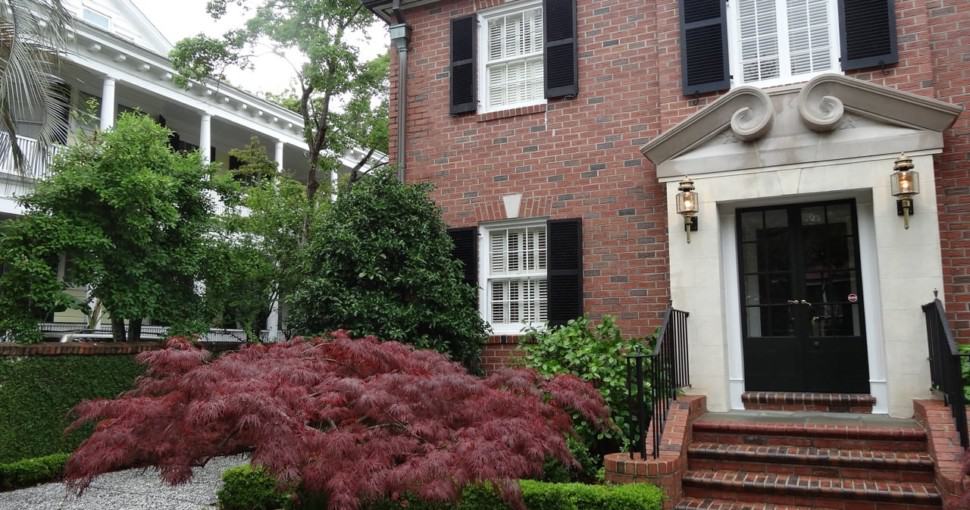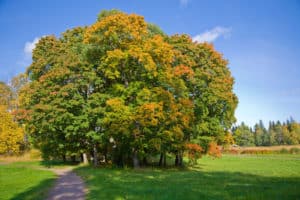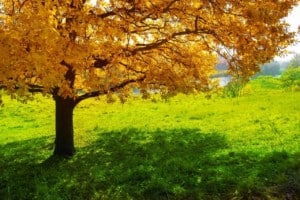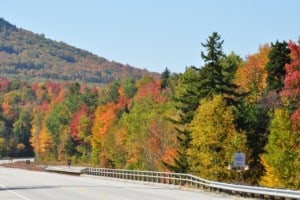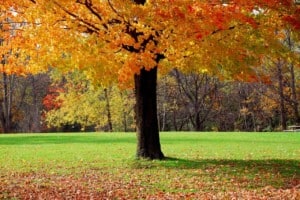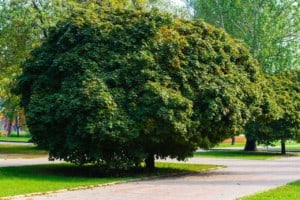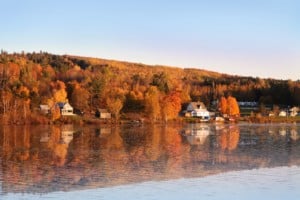Forests, one of the most prominent characteristics of the South Carolina environment, have played a significant part in the state’s history and economic growth. South Carolina boasts a diverse and abundant tree population, with species ranging from pine trees, oak trees, and elm trees to none other than maple trees.
Contents
- 1. Japanese Maple (Acer palmatum)
- 2. Fullmoon Maple (Acer japonicum)
- 3. Silver Maple (Acer saccharinum)
- 4. Southern Sugar Maple (Acer saccharum)
- 5. Freeman Maple (Acer X Freemanii)
- 6. Sugar Maple (Acer saccharum)
- 7. Chalkbark Maple (Acer leucoderme)
- 8. Amur Maple (Acer ginnala)
- 9. Trident Maple (Acer buergerianum)
- 10. Paperbark Maple (Acer griseum)
Most maple leaves are admired for their various shades of fall leaves, from mild yellow to a vivid orange and crimson color. Depending on the species, their growth rate and height are variable. Typically, their great size is an asset to provide shade for vegetation and wildlife, while some maple trees are used as accent trees for their delicate appearance. Others can be distinguished by certain features on their bark. Maple trees are perfect for use as patio trees, lawn specimens, hedges, border accents, screens, and even potted plants.
Rich, permeable, and well-drained soil is optimal for most maple trees. A majority of them thrive in a wide range of soil pH, while many prefer mildly acidic soil. Some maples can withstand a period of moderate drought. A large proportion of species prefer full sun or light shade. However, some species need to be shaded from the sun and irrigated to avoid leaf scorch.
In South Carolina, most regions are suitable for the growth of maple trees, for example, Southern Sugar Maple (Acer barbatum), Japanese Maple (Acer palmatum), Chalkbark Maple (Acer leucoderme), and more. In this post, we will discuss the various species of maple trees in the state. Let’s get started.
1. Japanese Maple (Acer palmatum)
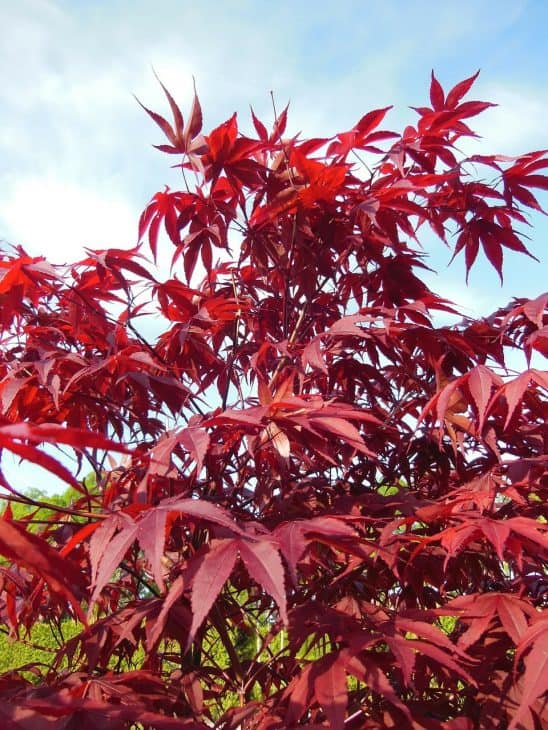
The Japanese Maple tree is usually vase-shaped, with red flowers and red to purple-red leaves during the spring season, which changes to green in the summers and becomes red once fall arrives. It grows well in moist, slightly acidic, and nutrient-rich soil. Some species can grow up to 40-50 feet in the wild, while others grow only 6-8 feet tall.
2. Fullmoon Maple (Acer japonicum)
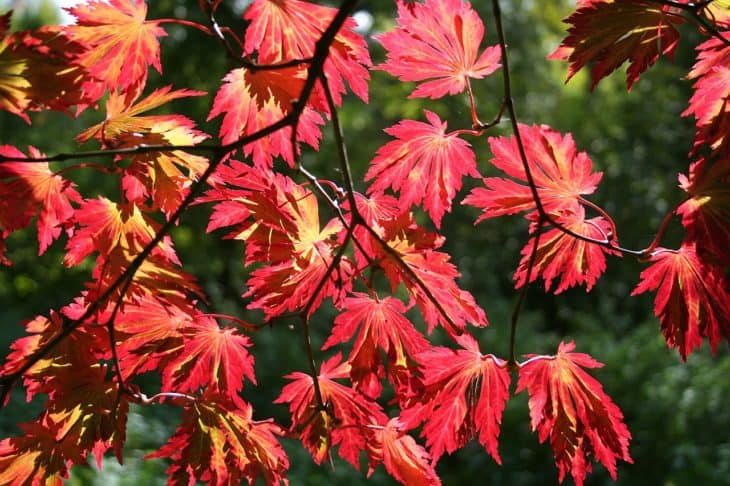
The Fullmoon Maple tree has vibrantly colored red leaves in the fall and purple-red flowers in the spring. Although, the Fullmoon Maple tree leaves are comparatively larger and wider, and the “Aconitifolium” cultivar features deeply lobed leaves. This tree can grow up to 20-30 feet, with a spread and soil requirement similar to that of the Japanese Maple.
3. Silver Maple (Acer saccharinum)
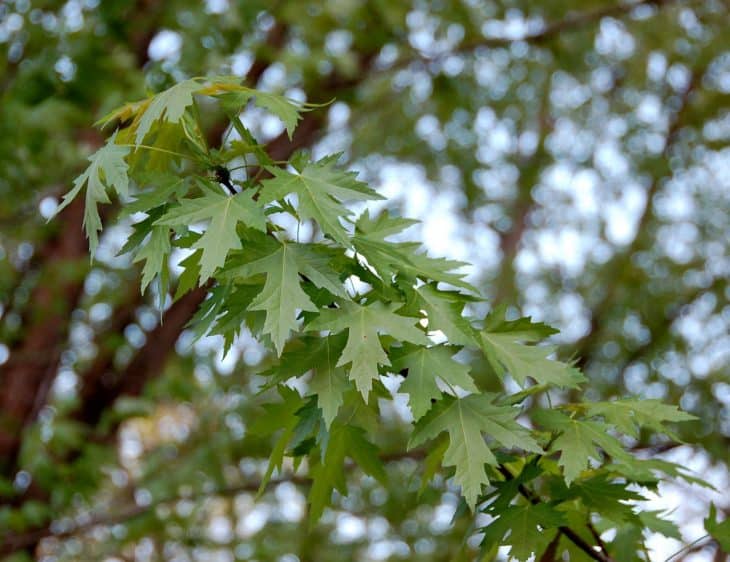
The silvery undersides of the bright green leaves make them particularly appealing. In spring, it flowers with red and yellow buds. Silver Maple is the quickest growing maple tree in the U.S., reaching a height of 50-70 feet and a width of 35-50 feet. It can grow in a wide range of soils but favors damp soils deep in the woods and alongside riverbeds.
4. Southern Sugar Maple (Acer saccharum)
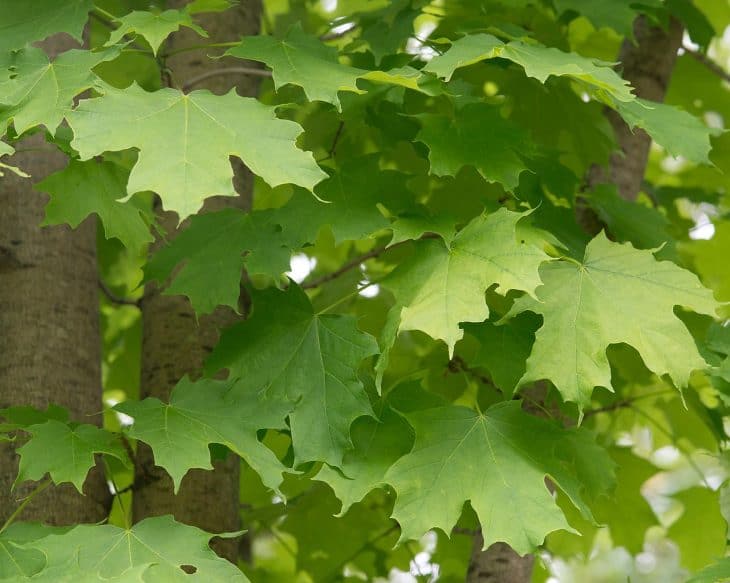
The Southern Sugar Maple has shallowly lobed yellow, orange, or red leaves, with a white underside. It features goldish-yellow or green flowers in spring. It is a long-lived tree that can grow from 20-70 feet tall, with a width of 35-50 feet. Young trees have smooth, pale-grey bark, whereas elder trees have shaggy bark. It is an excellent choice for hurricane-prone areas.
5. Freeman Maple (Acer X Freemanii)
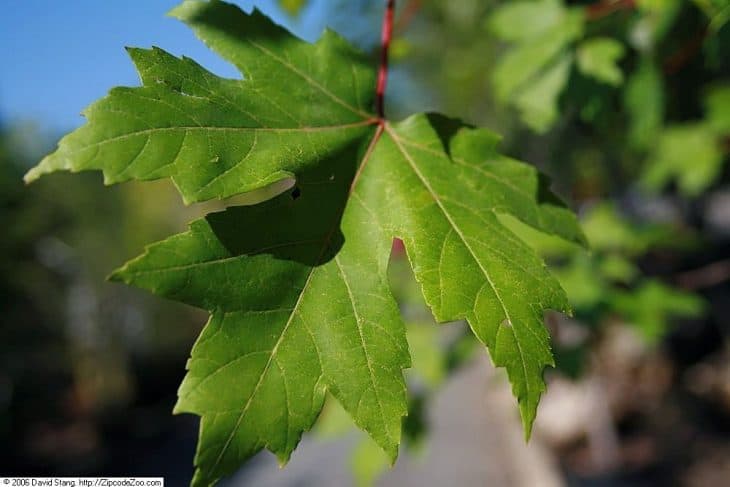
Freeman Maple, also known as Autumn Blaze, is a cross between Red Maples and Silver Maples. It has a bright orange-red fall color, and it grows fast, reaching heights of 40-50 feet and widths of 30-40 feet. In late April, dense red flowering clusters appear. The central lobe narrows at the base just under the tip of the leaf, while the sides are generally concave.
6. Sugar Maple (Acer saccharum)
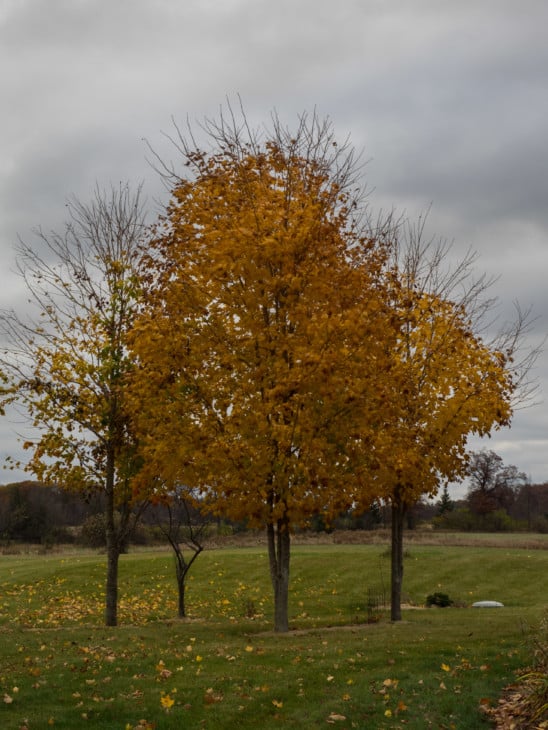
In the autumn, this large tree has a round, dense canopy and beautiful, multicolored foliage, and small, green clusters of flowers. They grow up to a size of 60-75 feet, although they can grow considerably larger in the wild. Its sap can be boiled to produce maple sugar and maple syrup. Fertile, mildly acidic, moist, and well-drained soil is optimal for its growth.
7. Chalkbark Maple (Acer leucoderme)
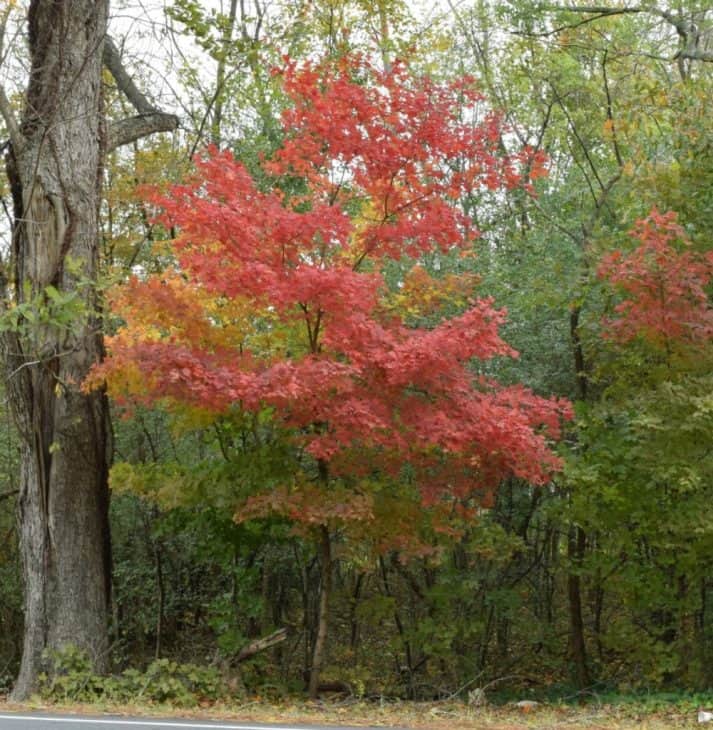
This is another sugar maple variety from the south, growing up to 25 feet, with 2-3 trunks. When mature, the bark appears to be chalky and white. Leaf colors in the fall range from yellow-orange to deep red. It blooms with inconspicuous and green and yellow flowers. It can grow well in the entire state of South Carolina.
8. Amur Maple (Acer ginnala)
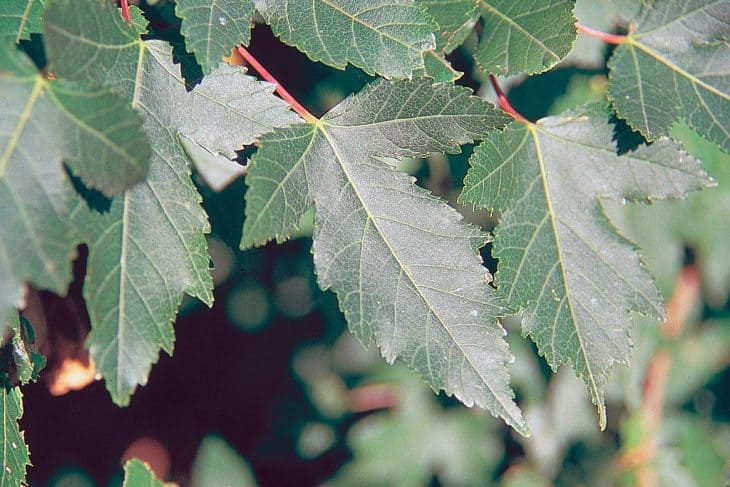
The Amur Maple reaches up to 15-20 feet in height, making it ideal for patios and small gardens. It’s most known for its vivid red leaves in the fall and fruit with pink or crimson wings. It blooms with yellowish-white flowers in the spring. It is suited to all of South Carolina save the southern coast; however, it favors a milder temperature.
9. Trident Maple (Acer buergerianum)
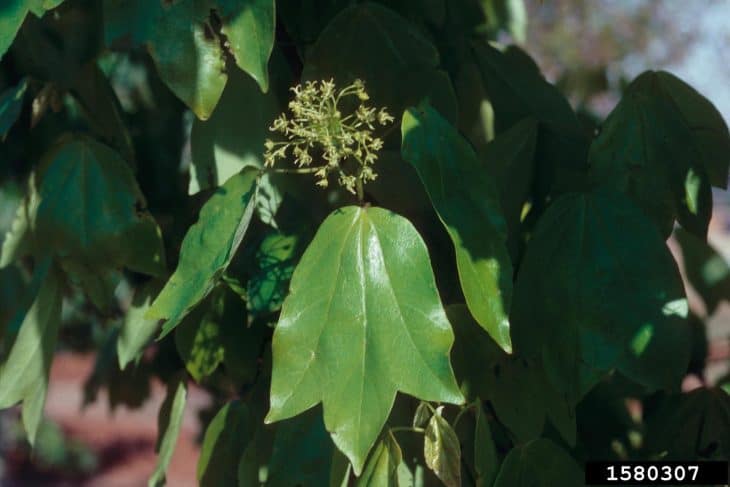
Growing up to 20-35 feet, the Trident Maple’s dark grey-brown trunk can flake in strips with time and have a tinge of orange color. The leaf almost always has three lobes facing forward. In the autumn, the glossy, dark green leaf turns yellowish to deep orange-red, giving it a vibrant look. In the spring, it flowers with small yellowish-green umbrella-shaped or flat-topped clusters.
10. Paperbark Maple (Acer griseum)
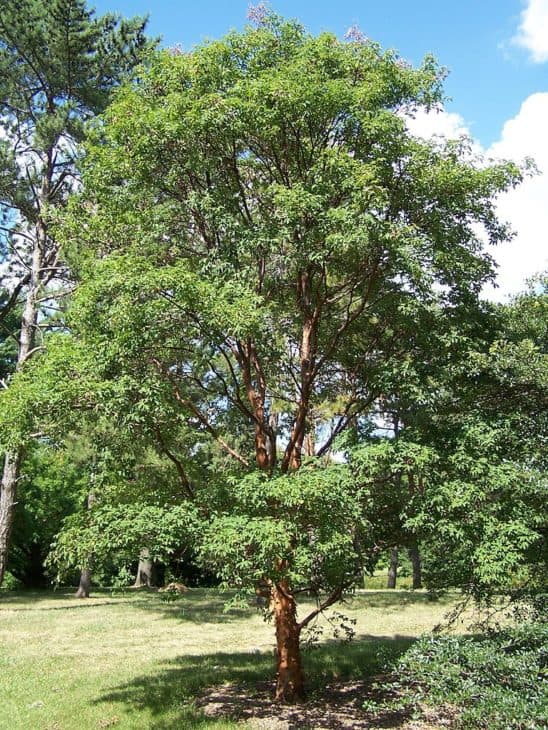
The Paperbark Maple grows up to 20-30 feet and has a chestnut-brown bark that can peel to reveal the bright cinnamon-red wood underneath. In the spring, it grows small yellow flowers, and its three-lobed leaves are dark green from above, with a blue-green underside. They turn into a warm red and orange in the autumn.

